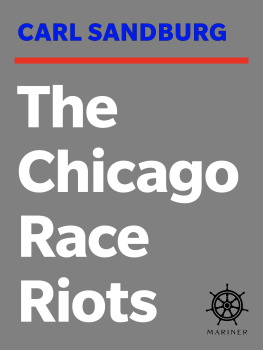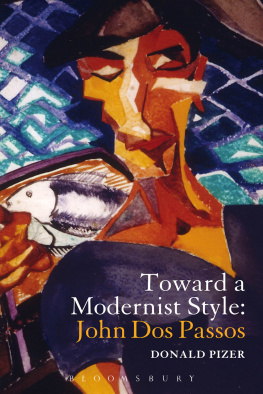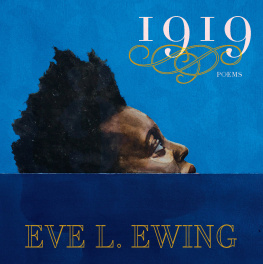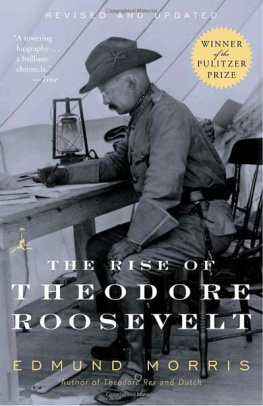Dos Passos John - 1919
Here you can read online Dos Passos John - 1919 full text of the book (entire story) in english for free. Download pdf and epub, get meaning, cover and reviews about this ebook. City: United States, year: 2010, publisher: Houghton Mifflin Harcourt;Tantor Media, genre: Detective and thriller. Description of the work, (preface) as well as reviews are available. Best literature library LitArk.com created for fans of good reading and offers a wide selection of genres:
Romance novel
Science fiction
Adventure
Detective
Science
History
Home and family
Prose
Art
Politics
Computer
Non-fiction
Religion
Business
Children
Humor
Choose a favorite category and find really read worthwhile books. Enjoy immersion in the world of imagination, feel the emotions of the characters or learn something new for yourself, make an fascinating discovery.
- Book:1919
- Author:
- Publisher:Houghton Mifflin Harcourt;Tantor Media
- Genre:
- Year:2010
- City:United States
- Rating:4 / 5
- Favourites:Add to favourites
- Your mark:
- 80
- 1
- 2
- 3
- 4
- 5
1919: summary, description and annotation
We offer to read an annotation, description, summary or preface (depends on what the author of the book "1919" wrote himself). If you haven't found the necessary information about the book — write in the comments, we will try to find it.
1919 — read online for free the complete book (whole text) full work
Below is the text of the book, divided by pages. System saving the place of the last page read, allows you to conveniently read the book "1919" online for free, without having to search again every time where you left off. Put a bookmark, and you can go to the page where you finished reading at any time.
Font size:
Interval:
Bookmark:
First Mariner Books edition 2000
Copyright 1932 and renewed 1959 by John Dos Passos
Grateful acknowledgment is made to E. L. Doctorow for permission to reprint the foreword, previously published in U.S.A. by John Dos Passos, copyright 1991 by E. L. Doctorow.
Title page illustration by Reginald Marsh copyright 1946 by John Dos Passos and Houghton Mifflin Company, copyright renewed 1974 by Houghton Mifflin Company.
ALL RIGHTS RESERVED
For information about permission to reproduce selections from this book, write to Permissions, Houghton Mifflin Harcourt Publishing Company, 215 Park Avenue South, New York, New York 10003.
www.hmhco.com
The Library of Congress has cataloged the print edition as follows:
Dos Passos, John, 18961970.
1919 / John Dos Passos.
p. cm.(U.S.A. ; v. 2)
A Mariner book.
ISBN 0-618-05682-3
1. United StatesHistory19131921Fiction. 2. World War, 19141918InfluenceFiction. I. Title:
Nineteen nineteen. II. Title.
PS 3507. O 743 N 53 2000
813'.52dc21 00-027609
eISBN 978-0-544-34145-6
v1.1213
Given neither to he-man esthetics, like Hemingway, nor to the romance of self-destruction, like Fitzgerald, John Dos Passos, their friend and contemporaryhe was born in 1896was a modest self-effacing person, an inveterate wanderer who liked to hike through foreign places and sit down for a drink with strangers and listen to their stories. He saw literature as reportage. He admired the plain style of Defoe, and he read Thackerays Vanity Fair, subtitled A Novel Without a Hero, all his life.
Dos Passos was born wandering, living out his lonely childhood with his unmarried mother, Lucy Madison, as she toured the European capitals to avoid scandal while, in the United States, his father, John R. Dos Passos, an eminent corporate lawyer and lobbyist, waited for his invalided first wife to die. When that event came about, in 1910, the mother, the father, and the boy, a strongly loving triad, were able finally to constitute themselves as a family. But the isolation of his early life left Dos Passos psychologically detached, with the feelings of a perpetual outsider.
The outside, of course, is a position of advantage for a writer. Reportage from the outside, and slightly above, is the working viewpoint of Dos Passoss masterpiece, U.S.A. It is a nice irony that not the eras big literary personalities, but this quiet inhibited young man, would produce the most vaultingly ambitious novel of alla twelve-hundred-page chronicle of the historic and spiritual life of an entire country in the first three decades of the twentieth century. Not for him the portrait of a gangster, however metaphorically shimmering, or even the group portrait of a lost generation: Dos Passos goes widefrom the American incursion in the Philippines to the beginning of the talkies, from coast to coast and class to class. U.S.A. is the novel as mural, with societys heroes standing out from the flames of history while the small-figured masses toil at their feet.
In fact, the peripatetic Dos Passos landed one day in Mexico City and was much taken with the murals of Diego Rivera colorfully spreading, story after story, up the courtyard walls of the Secretariat of Education. In later years he indicated also his love of thirteenth-and fourteenth-century European tableauxthose with the saints painted big and the ordinary people painted small, filling up the background.
He published the first installment of U.S.A., The 42nd Parallel, in 1929, having realized early on that what he was doing could not be contained in one volume. 1919 followed two years later, and the final volume, The Big Money, was published in 1936. He could have gone onhe had endless resources for the thing, having picked up its rhythm and much of the material from his own ambulating life. Hed gone up from Baltimore to Harvard, where he read and was impressed by the Imagist poetsPound, Amy Lowell, Carl Sandburg. He also made his acquaintance with the work on James Joyce, the twentieth-century writer who, though hardly given to English plain speech, would have the most enduring influence on him. After Harvard he went back to his wandering, spending a year in Spain and studying architecture. But World War I was just over the border, and in 1916 he volunteered to drive for the Norton-Harjes Ambulance Service, the same organization for which Hemingway and E. E. Cummings drove. He served in France and Italy, and then with the entry of America into the conflict he enlisted in AEF and, all told, got as much of a dose of modern war as he would need for the inspiration to portray its soldier-victims in his first novel, Three Soldiers (1921).
The reticent writer was always disposed to the action. In the postwar twenties, he managed time and again to place himself in historys hotspotswhether the literary scene in New York and Paris, revolutionary Mexico after the death of Emiliano Zapata, the newly Communist Soviet Union, or the nativist city of Boston, where he marched for the two imprisoned and condemned immigrant anarchists Sacco and Vanzetti.
He was writing all the time, of course. He published Rosinante to the Road Again (1922), a book of essays about Spain, Manhattan Transfer (1925), a dark impressionist portrait of New York and technical precursor of the U.S.A. novels, and pieces in the New Masses, The Dial, The Nation, and The New Republic attesting to his leftist sensibility. He was a diarist and kept up an active correspondence with a variety of colleagues including Edmund Wilson, Malcolm Cowley, Hemingway, and Fitzgeraldall of them worried in the world, all of them news junkies arguing politics and entangling themselves in the crises of civilization.
Not until the Spanish civil war would the profound difference between Dos Passoss humanist ideals and the doctrinaire idealism of many of his contemporaries become clear: the visible moment of separation seems to have occurred with the execution in Valencia of his friend Jos Robles, a Republican, by a Communist firing squad.
In his later life Dos Passos was as archly conservative as he had been radical. What remained constant, like a moral compass course that never veered, was his despair of the fate of the single human being bent into service of the institutions of modern industrial society, whatever those institutions might be.
In fact, the pervading vision of U.S.A. is of people dominated by institutions, which is to say trapped in history. The novel is without a hero. We are given narratives of the lives of a dozen men and womenJoe Williams, a seaman; Mac, a typesetter; J. Ward Moorehouse, a public relations man; Eleanor Stoddard, a stage designer; Dick Savage, a Harvard graduate and World War I ambulance driver; Charley Anderson, a wartime air ace and inventor; Margo Dowling, an actress; Ben Compton, a union organizer; and so onand watch three decades pass through them as they reach their prime and then age and flounder, either to die or to simply disappear or, with one or two exceptions, to end in moral defeat. Living below the headlines, theyre presented as ordinaries: their lives can intersect, they can sometimes be charming or sympathetic, but they are always seen from above, as in satire, and all their irresolution, self-deceit, and haplessness, and their failure to find empowerment in love or social rebellion, is unconsoled by the moral structure of a plot. U.S.A. has no plot, only the movement forward of its multiple narratives under the presiding circumstances of history.
The circumstances themselves are occasionally flashed to us by means of the so-called Newsreels that interrupt the text with actual headlines from newspapers of the time, fragments of news stories, advertising slogans, and popular song lyrics, all popping up in rat-a-tat fashion, like momentary garish illuminations, as from fireworks, of the American landscape.
Next pageFont size:
Interval:
Bookmark:
Similar books «1919»
Look at similar books to 1919. We have selected literature similar in name and meaning in the hope of providing readers with more options to find new, interesting, not yet read works.
Discussion, reviews of the book 1919 and just readers' own opinions. Leave your comments, write what you think about the work, its meaning or the main characters. Specify what exactly you liked and what you didn't like, and why you think so.













